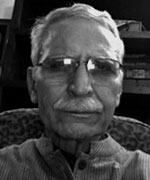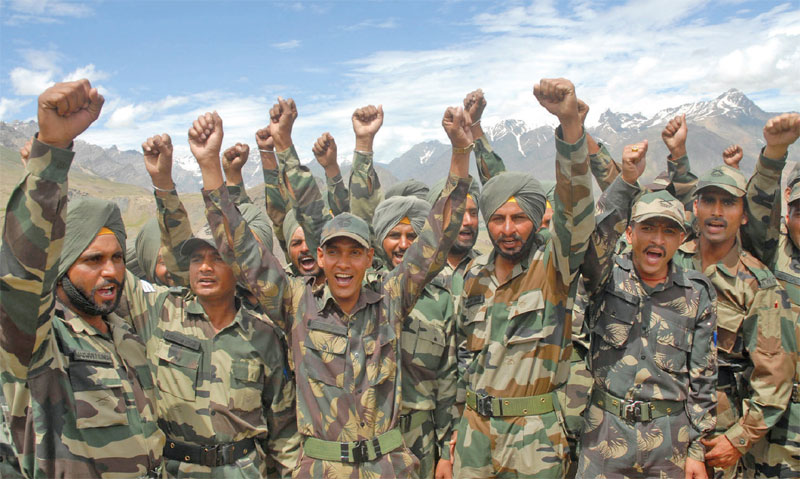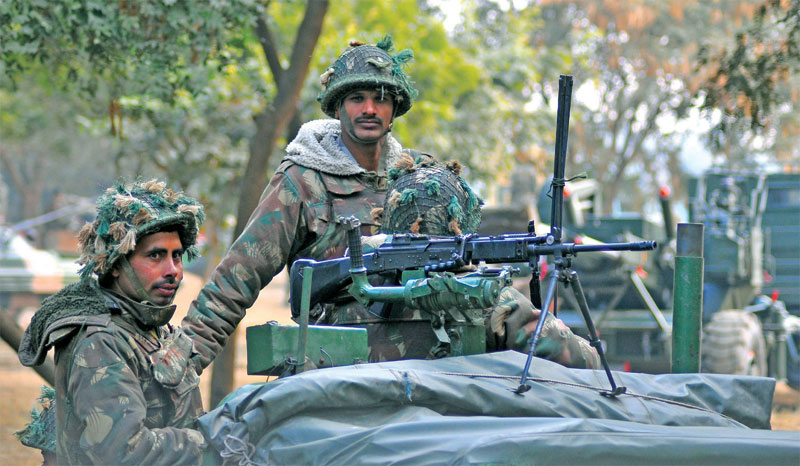The Agnipath scheme can yet be redeemed through some critical modifications
 Lt Gen. Z.U. Shah (retd)
Lt Gen. Z.U. Shah (retd)
The armed forces are not like a limited liability company to be reconstructed from time to time as the money fluctuates. It is not an inanimate thing like a house to be pulled down or enlarged or structurally altered at the caprice of the tenant or owner. It is a living thing. If it is bullied it sulks; if it is unhappy, it pines; if it is harried it gets feverish; if it is sufficiently disturbed it will wither and dwindle and almost die. And when it comes to this last serious condition, it is only revived through lot of effort and lots of money
—Sir Winston Churchill, former soldier and statesman
The Indian armed forces have always been the nation’s instrument of last resort. They have remained apolitical and steadfastly carried out allotted missions with dedication and élan. Handling of these onerous responsibilities has been achieved by professionalism and protracted, regular training.
The strength of the armed forces flows out from their traditions and long-term bonding between all ranks. A well-known maxim stresses that ‘anything that works (and works well), don’t try and fix it’. Militaries need to constantly evolve; institute changes according to the situation, but only after due deliberation by experienced stakeholders based on their wisdom and long-term experience. Any radical measure foisted on the armed forces, without in-depth analysis, will have adverse impact on their battle readiness and performance.
We need to learn from the experience of Short Service Commissioned Officers, whose tenure of service was, quite rightly, increased from 5 to 10 years. Despite government assurances, a large number, on release, had to struggle to find re-employment. The original dispensation of less demanding terms of entry, extended by the government, for their lateral entry into the Central services was withdrawn after a few years, under pressure from the Central Services. The same applied to Emergency Commissioned (EC) Officers. I remember the case of a BSF officer, in my Brigade in Nagaland, who was an Inspector before he responded to the call of duty and was granted an EC. When he was released after five years’ service he had no option but to accept reversion to his original rank of Inspector.
The underlying rationale for the Agnipath scheme is to reduce the mounting defence pension bill, estimated to be over a third (including MOD civilians who are the major recipients) of the defence budget and lower the age profile of the armed forces. This aim of reducing funds currently under the head of pensions, is undoubtedly a challenge, but there are many other ways to achieve it. The strength of the Indian military is about 1.4 million. This includes about 3.75 lakh civilian employees, paid out of the defence budget. Though they are around 25 per cent of the strength of the defence forces, in terms of pay and allowances, their take home emoluments for both pay and pension, in percentage terms, are higher due to their longer service, Non-Functional Financial Up-gradation (NFFU) and higher allowances. One method of saving funds for the armed forces is therefore to substantially reduce or completely remove the civilian cadre from defence estimates. This recommendation has been repeatedly made in the past (Shekatkar Committee recommendation).
Salient Features of ‘Agnipath’ Scheme
The government has made it clear that despite massive objections, from veterans largely, there would be no roll back of the Agnipath entry scheme. It may therefore be worth the while to examine its pitfalls and recommend corrective measures to alleviate, partially, the adverse effects of this scheme.
The ‘Tour of Duty’ scheme, now renamed ‘Agnipath’, was conceived in 2020 under the aegis of ‘Department of Military Affairs’ headed by then CDS General Bipin Rawat. It envisages a short-term recruitment plan of males aged between 18-21 years with 10+2 qualification, enrolled on a contractual basis for a period of four years. After this period 25 per cent ‘Agniveers’ would be retained and re-enrolled for 15 years with fresh terms of service with a proviso (unfair to my mind) that their earlier service of four years would not be counted for purposes of emoluments, seniority, promotion and retirement benefits.
The remaining 75 per cent would be released with a severance package, termed ‘Seva Nidhi’, of an amount of about Rs 10 lakhs with the individuals contributing 30 per cent of monthly emoluments and government contributing an equal amount. The government has given assurances it would facilitate re-employment of released Agniveers as they would have acquired new skills, in service, which would enable them to get equivalent jobs in the corporate sectors and Para Military forces. A mute question is whether in the short span of four years, committed on combat duties, would the released Agniveers, be able to acquire new skills required by trade. Ultimately, if their expectations remain unmet, these released soldiers, at best, may get low paid jobs like security guards and drivers. An Agniveer, on release, would be drawing a salary of about Rs 40,000/. He would be highly frustrated when his expectations of an equivalent or higher salary are not met.
The number of ‘Agniveers’ recruited would be about 1.25 lakh in the near future with intake of 50,00-60,000 every year. The replacement of personnel in all units, including the One Class Regiments, will be on All India, All Class basis, detracting from the reasons why the regimental system, which has stood the test of time, was adopted. The claim that the Regimental system, will continue, rings hollow.
The Agnipath scheme will not apply to technical personnel and most likely the Navy, Air Force and Regiments of the Army with large holdings of technical equipment would not receive Agniveers. It is the Infantry, the workhorse of the army that will bear the brunt. The mortification as being termed the PBI (Poor Bloody Infantry) will gather greater traction.
Rationale for the Regimental System
It is essential to examine the rationale for the adoption of the Regimental system. In ancient times a soldier fought for his religious faith, (Crusades, a striking example), king or country.
When the British were occupying territories in India, they did it by subterfuge, but their sword arm were troops recruited from India. How did they achieve this in an alien land peopled with a multitude of religious faiths, hundreds of Rajas and Maharajas, controlling fractured parcels of land? There was no unified country. Unified India, as we know it today, did not exist. The rallying prerequisites of ‘King or Country’ to motivate the Indian ‘Sepoys’ was non-existent.
Religion certainly was important and the British realised that the best way to motivate men in war was through invoking emotions. They adopted the ‘Regimental System’ by recruiting troops from different regions, and banding them together by religious denomination, in regiments. Men from any one particular unit were recruited from the same geographical area and knew each other intimately. Loyalty to one’s regiment was the principal motivating factor. Soldiers fought primarily to safe guard their unit’s ‘Izzat‘(Honour). Any incidents of cowardice or indiscipline, spread like wildfire throughout the region of that Regiment. This acted as a very effective deterrent.
Subsequent to the 1857 War of Independence, or the ‘Sepoy Mutiny’, as the British refer to it, the regiments that ‘mutinied’ were disbanded and others whose loyalty was suspect were reorganized into ‘fixed class’ units. That meant that one unit contained sub- units of different religious/ class denominations, possibly to act as a counter weight to each other in the event of any anti-British sentiments surfacing again.
On achieving independence, the Indian armed forces retained the best of some of the old traditions, primarily the Regimental system, for the combat arms which had evolved over centuries and had stood the test of time. There was a slight hiccup in 1980 when after the Golden Temple misadventure an attempt was made to mix up the components of the ‘One’ Class regiments. This was subsequently abandoned for very valid reasons and should not be repeated.
My personal experience will recount why I agree with the above quote of Winston Churchill. I spent the first 22 years of my service in an Artillery Regiment comprising of Rajputs, primarily from Rajasthan, UP and MP. The men who joined with me as recruits had become senior JCOs when I assumed command. I got to know them intimately and also the strengths and foibles of this virile and proud class of people. I learnt their folklore, their language, traditional martial songs and am proud to say that I knew the men better than their mothers. I write this not to deride mixed class units. There are first class regiments amongst them like the Guards, Grenadiers, Rajputs, Marathas, Parachute Regiment and Special Forces, to name a few, but there are distinct advantages of single class regiments like single deity in the Unit Mandir, war cry, language, logistics, eating habits etc.
The Agnipath scheme has been introduced to bring down the age profile of soldiers. Young ‘green horns’ aged between 18-21 of age are certainly full of spunk but they will be short on maturity. My experience is that soldiers are at their peak of efficiency, maturity and physical fitness between ages of 25-35 years.

Pitfalls of Agnipath
The four years tour of duty is too short since it envisages curtailed six months training period—grossly inadequate, especially for arms and services with high end technical equipment like armoured fighting vehicles, artillery and air defence. Another eight months will be consumed by yearly annual leave of two months per year and pre-release formalities will take six months. That will leave a period of 28 months, only, for unit service, totally inadequate for developing unit esprit de corps and integration, essential for combat duties.
Given the diverse backgrounds of the new recruits, moulding a raw recruit into a seasoned soldier is a painstaking transformational process. It entails individual nurturing, mentoring, building self-esteem, inculcating the ethos of a regiment, and imbibing a deep sense of conviction. It takes years to prepare a battle-worthy soldier.
The structural foundation, the edifice of the Indian Army, rests on the units whose organizational culture is defined by camaraderie and ‘esprit de corps’ based on mutual faith and trust cultivated over long-term association. While technical skills like handling of weapons and equipment or tactical drills can be developed in a shorter timeframe, it takes longer to build team cohesion. It is because of this institutionalized and time-tested system that an Indian soldier has proved his worth against the heaviest odds, despite being inadequately-equipped, fighting with whatever was available.
I would not envy the predicament of a commanding officer with 25 per cent of his strength undergoing turnover every year. There will also be additional personnel retiring or being medically boarded out. The ‘Green Horns’ are unlikely to be assigned any important tasks, in the present ‘No Mistake Syndrome’ environment. The permanent cadre would have to bear major additional load. Commanding officers will get embroiled in additional paperwork continuously drawing lists of those who are to be re-recruited and resolving representations from those have not. The ‘Green Horns’ will most certainly resort to malpractices in an attempt to figure in the ‘list’ of the chosen few.
The Agnipath scheme has been modelled on the ‘Tour of Duty’ scheme of the US and the West, which once had peaceful neighbourhoods with settled borders where short term soldiering made sense. The war in Ukraine has unsettled all previous calculations. Incidentally, US’s humiliating defeats in Vietnam and Afghanistan was significantly due to card punching syndrome and poor performance of short-term soldiers. Currently, in Ukraine the performance of under trained Russian conscripts has been dismal. Even in the Chinese military’s, part-time soldiers, were found wanting against seasoned Indian troops in Ladakh, despite being equipped with state-of-the-art weapons and equipment.

Remedial Measures
The shortcomings pointed out can be rectified in case the government adopts a more flexible approach to the methodology to retain the basic character of the regimental system. The post release absorption of the 75 per cent Agniveers, will be a Herculean task but can be achieved if the government has the will to ensure implementation.
- The character of one class and fixed class units must be maintained so as to retain the advantages of the Regimental system.
- The period of service for Agniveers should be extended to 10 years with 7-10 years reserve liability. The last year (10th) must be earmarked to put the Agniveers through an ITI course to enable them to learn industrial skills.
- The training period of recruits should not be curtailed and there is a need to revert to the original training schedules.
- Entry to the Territorial Army should be restricted to released Agniveers
- The government must give cast iron guarantees on re-employment of Agniveers with specific vacancies earmarked in Central Paramilitary Forces and Police which must be mandatory to fill up. Despite resistance from the parent organisations these vacancies must not be filled up by other entries.
- Industry must earmark specific vacancies for employment of Agniveers with provisions of punitive action in case of non-compliance.
Conclusion
It is essential the youth become better disciplined citizens and imbibe/ learn the professionalism, dedication and single-minded focus that the armed forces exemplify with the military being the lead instrument in this endeavour. In the process, the latter’s capabilities should not be blunted, no matter what the costs.
The armed forces are not for experimentation. The envisaged changes are likely to change the character and dilute the strength of the armed forces that have been nurtured over decades and have paid handsome dividends to the nation.
Detailed ‘cost-benefit’ analysis of the Agniveer scheme reveals that drawbacks far outweigh the benefits. The government must take note of the pitfalls and take corrective measures so as not to not affect the capability of the armed forces yet achieve the results.

